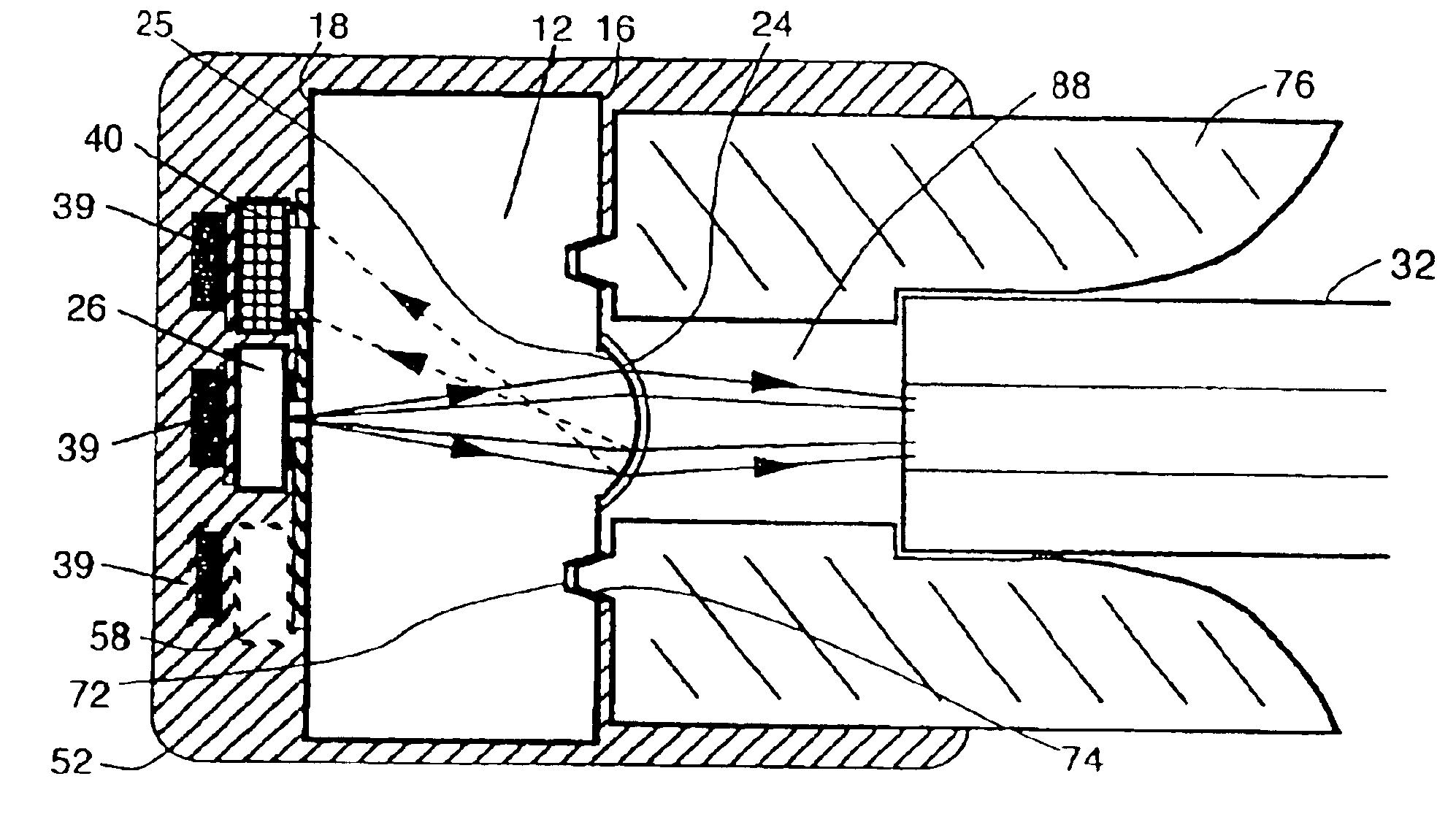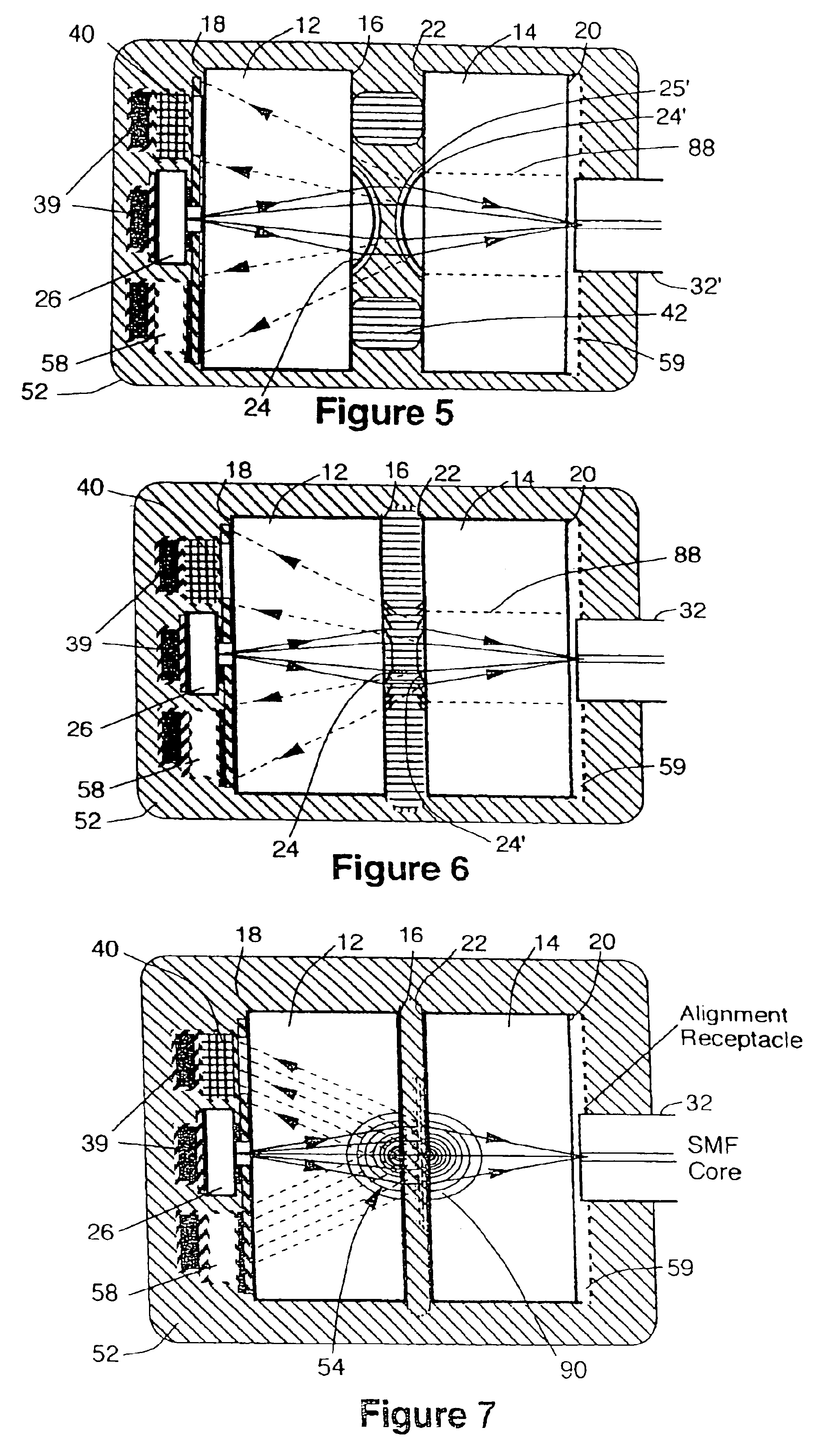Opto-mechanical assembly
- Summary
- Abstract
- Description
- Claims
- Application Information
AI Technical Summary
Benefits of technology
Problems solved by technology
Method used
Image
Examples
Embodiment Construction
[0058]Before describing the invention, it is essential to provide definitions to terms that are used in the description of the invention. The first of these terms is an optical waveguide.
[0059]For the purposes of this patent application, an “optical waveguide” is a system of material boundaries or structures for guiding an optical wave. Such waveguides include, but are not limited to, single mode optical fibers, multi-mode optical fibers, semiconductor waveguides, dielectric waveguides, single mode polymer waveguides, and multimode polymer waveguides and optical connectors.
[0060]A single mode optical fiber (SMF) is a fiber optic cable in which only the lowest order bound mode (which may consist of a pair of orthogonal polarized fields) may propagate at the wavelength of interest. Generally, SMF has a waveguide in core diameter of ˜8 μm for wavelengths in the 1300 to 1600 nm range. It should be appreciated that the diameter of the SMF may vary while still utilizing the teachings of t...
PUM
 Login to View More
Login to View More Abstract
Description
Claims
Application Information
 Login to View More
Login to View More - R&D
- Intellectual Property
- Life Sciences
- Materials
- Tech Scout
- Unparalleled Data Quality
- Higher Quality Content
- 60% Fewer Hallucinations
Browse by: Latest US Patents, China's latest patents, Technical Efficacy Thesaurus, Application Domain, Technology Topic, Popular Technical Reports.
© 2025 PatSnap. All rights reserved.Legal|Privacy policy|Modern Slavery Act Transparency Statement|Sitemap|About US| Contact US: help@patsnap.com



